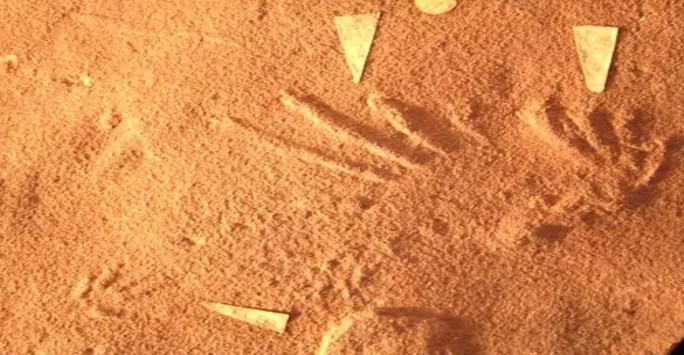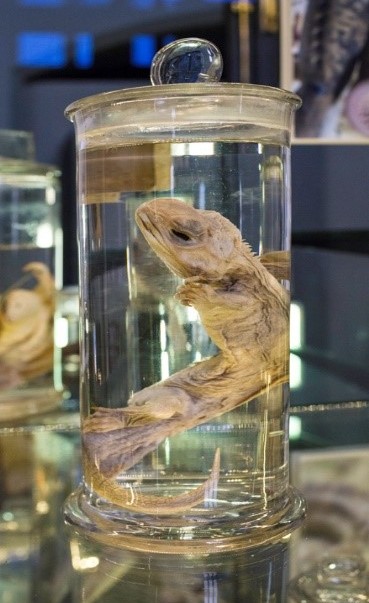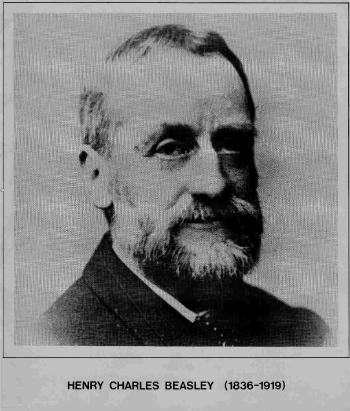A Fossil For Friday -The Oldest Object in the Collection
Posted on: 27 August 2020 by Lorna Sergeant Collections and Exhibitions Officer in 2020

We are almost certain that this footprint made by ‘Beasley’s type D2 Rhynchosaurides Rectipes’ which has been dated as over 240,000,000 years old, is the object that most accurately fits this week’s blog description.
On 13th December 1859 nine men met at number 7 London Road, Liverpool, the home of George Highfield Moreton, a painter and decorator. They agreed to the formation of The Liverpool Geological Society. The objectives of the Society were drawn up "to investigate the structure of the Earth, the character of its past inhabitants, and the changes now in progress upon its surface.” The first open meeting was administered on the 10th of January 1860. The society consisted of a membership of ordinary men and women sharing a passion for geology. The society remains active to the present day and is composed of ordinary people with a passion for geology.
.jpg)
This trace fossil was acquired by Dr Ricketts of the Liverpool Geological society. Trace fossils are best preserved in sandstone. At that time, the sandstone quarries in Cheshire and Merseyside were a prolific source of trace-fossil footprints made by extinct Triassic vertebrates, and many important discoveries were made.
The prints belong to a small herbivorous reptile that walked across a North West landscape very different from the one we know today. A Sphenodon is the closest living relative to the extinct reptile that made the footprint in this specimen.

A Sphenodon from the University of Liverpool’s heritage collection
Henry Beasley who was an amateur member of the Liverpool Geological society, made the first serious attempt to classify the footprints in 1895. He recognised eight different types which he designated by the letters A-H. This is Beasley’s type D2 specimen. A “type specimen “is the definition given to the first example of its type ever discovered. Fellow member George Morton published a similar classification two years later and applied scientific names to the footprints. After Morton’s death in 1904 Beasley produced six reports on footprints for a committee set up by the British Association for the Advancement of Science on the study of the Triassic System in Britain.

Photograph of Henry Charles Beasley
Beasley died in Liverpool on December 14, 1919, at the age of 83. He was described in his obituary as being:
“a most in- de-fatigable and persistent worker at his favourite geological subjects, such work being his relaxation from an active commercial career. His unselfish character and his readiness at all times to assist any fellow-worker endeared him to all who knew him.”
Beasley had a passion for his subject although he never completed the definitive classification of footprints to which he aspired. He did succeed in proposing a provisional scheme of classification that is used in Ichnology research and study to this day.
This object is on display in our Tate Hall museum and also makes up part of the '100 Objects North' project, a collection of 100 objects nominated by museums across Northern England that collectively tell the story of the north of England.
Keywords: Fossil, Trace Fossil, 100 Objects North, Museum.